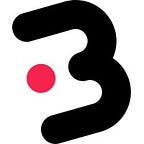Morning Star — Technical Indicator Explained
A morning star is a pictorial pattern of 3 candlesticks which technical analysts perceive as a bullish sign. After a downward trend, a morning star is forming and indicates the beginning of the upward ascent. This is a sign that the previous price trend has reversed. Traders watch for a morning star to form and then seek validation that additional indicators are indeed used.
The morning star’s middle candle depicts a moment of market indecision when the bears begin to give way to the bulls. The third candle validates the reversal and may signal the start of a new uptrend.
How to Interpret a Morning Star Candlestick?
At the end of a downtrend, a morning star bullish pattern is generated. Following that, a bearish candle appears, with a gap down. In the middle, we can observe a little bullish/bearish candle forming. A bullish candle is generated after a gap up is formed. A morning star’s visuals match the chart illustration above.
Morning star patterns can be used as a pictorial indicator for the commencement of a trend reversal from bearish to bullish, but they become more significant when other technical indicators, such as those stated before, back them up. Another major aspect that contributes to pattern creation is volume. A trader wants to see volume increase throughout the course of the three sessions that make up the pattern, with the third day having the largest volume. Regardless of other signs, high volume on the third day is frequently considered as a confirmation of the pattern.
What is the distinction between a Morning Star and a Doji Morning Star?
A minor variation of the morning star pattern exists. A Doji is formed when the price action in the middle candlestick is essentially flat. This is a small candlestick with no noticeable wicks, similar to a “+ sign.” The Doji morning star more clearly demonstrates market indecision than a morning star with a thicker middle candle. When a Doji appears after a red candle, there is usually a more aggressive volume spike and a consequently longer green candle because more traders can clearly identify a morning star formation.
What is the difference between a Morning and an Evening Star?
An evening star is, of course, the opposite of a morning star. The evening star consists of a long green candle, a short red or green candle, and a long red candle that is at least half the length of the green candle from the previous session. The evening star indicates an uptrend reversal, with the bulls giving way to the bears.
What is the drawback of using the Morning Star?
Trading only on the basis of graphical patterns might be dangerous. A morning star is most effective when it is accompanied by volume and another sign, such as a support level. Otherwise, morning stars are easy to spot anytime a little candle appears in a downtrend.
Disclaimer: There are potential risks relating to trading and investing and you should not trade with money that you cannot afford to lose however, for those that educate themselves and adopt appropriate risk management strategies, the potential update can be significant. Please note that all opinions, research, analysis, and other information are provided as general market commentary and not as specific investment advice.
Bytemine: Build, backtest, and deploy trading algorithms for all major global financial instruments and asset classes from your browser without coding. Our easy-to-understand graphical user interface helps traders of all levels to become more successful and enter each trade like a professional trader. Create an account today and access our global market data, trading signals and start creating your own trading algorithms on a free, limited plan. Upgrade anytime with no commitment.
